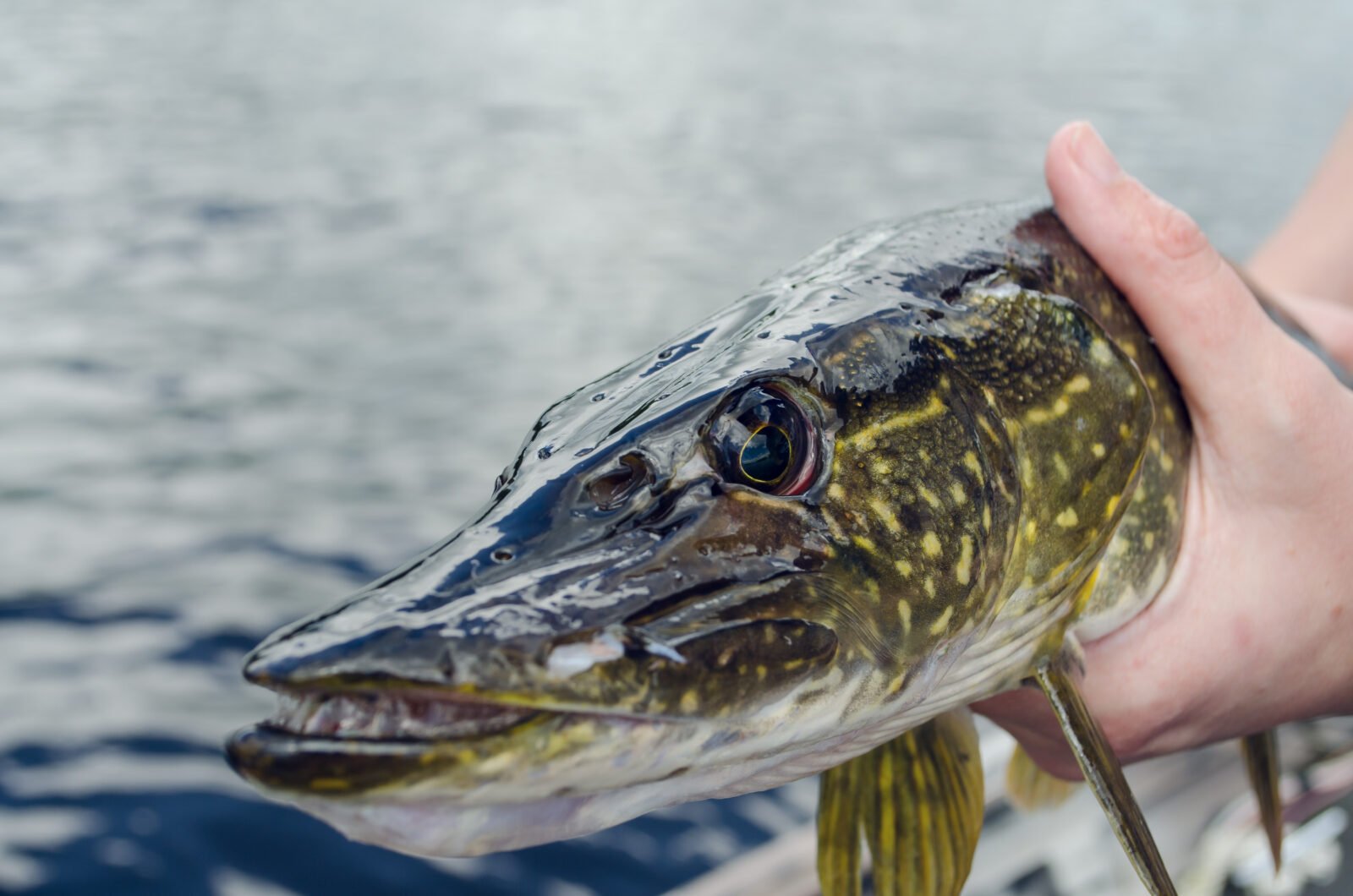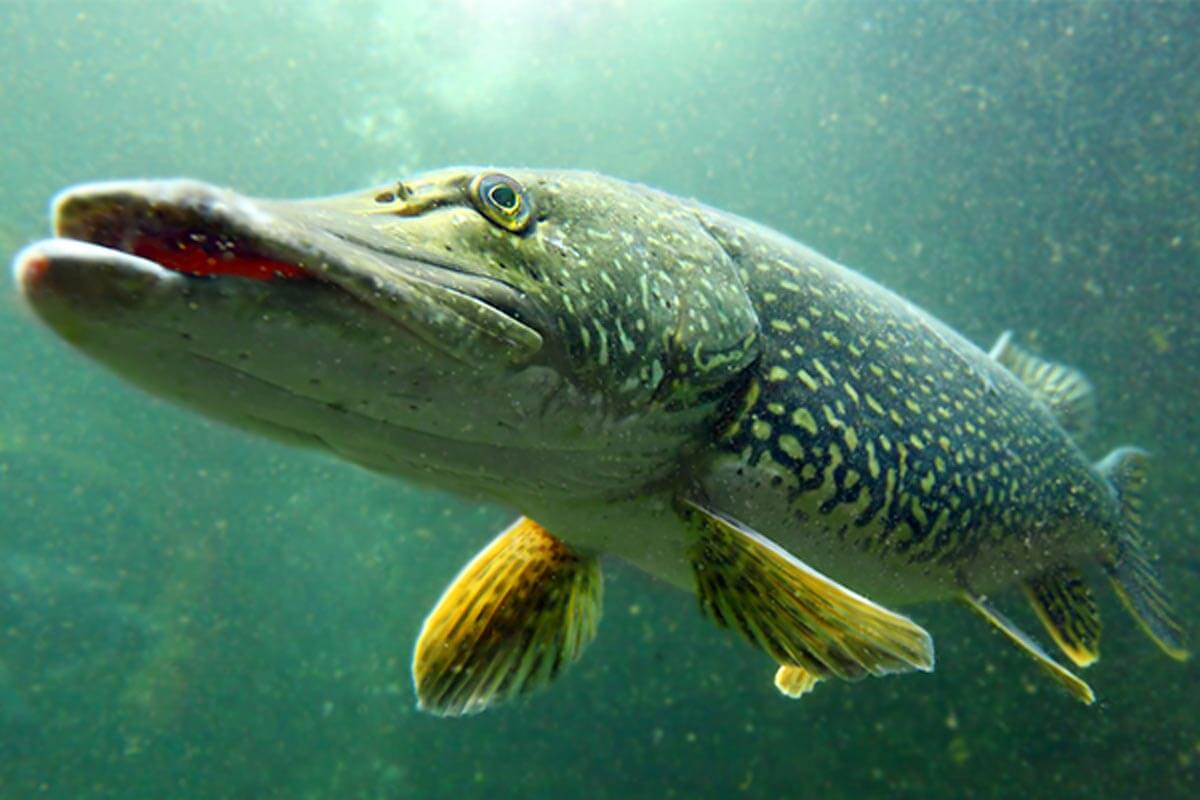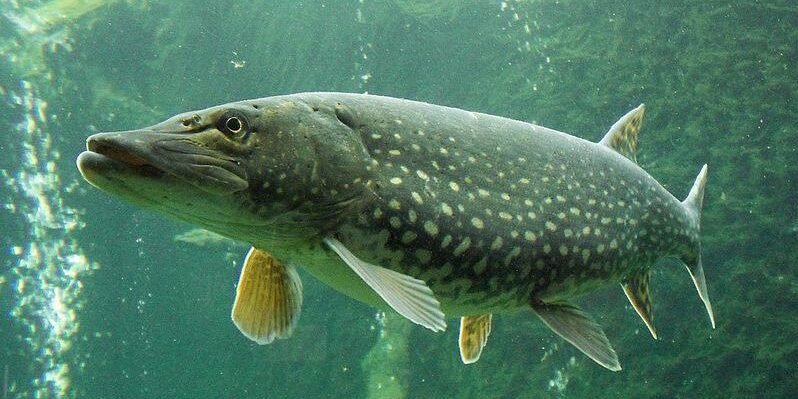This fish is the true pike, often called white-spotted pickerel. I knew an ichthyologist who tried to change this by introducing a plain-colored type of muskellunge under the name of “Great Northern Pike.” The result was that fishermen fell upon this person from all directions and raised particular hob because he had attempted to juggle their known and popular nomenclature to suit his own whim.
This white-spotted great northern pike is apparently the identical fish that inhabits freshwater lakes and streams all over Europe and Asia as well as here. At least no success has crowned any attempt to find a line of demarcation between them.
This is a fish that lives in our northern waters from the Ohio River region to as far north as freshwater is found. Unless it has been transplanted there it does not live in the Pacific watershed with the exception of Alaska.
In Canada, it grows to a large size, but it is said to reach even larger proportions in its Old World habitat. Forty pounds or even more have been tallied in America for it. I personally have had several very large specimens bought to me for mounting. One I recall in particular was of forty-five pounds weight. However, it is not recorded of any such weights as are attained by the Tiger Musky, or the still larger Saint Lawrence Musky.
The northern pike is ardently fished for by an army of anglers, though some “picky” people stick up their noses at ever eating its flesh. These characters call it a “snake,” and after enjoying catching it on every kind of bait, plug or skinner, and being thrilled by its fighting spirit when hooked, cast it aside as not worth their notice on the table.

But a large number of non-finicky people realize that the flaky white meat of this pike is truly a delicacy. It does have small bones in the muscles of the upper side, but they are forked in shape and very easily plucked out as eating proceeds. The meat of the head and shoulders is the primmest ever for making great fish chowder. Yeah, I know. You probably threw this part in the trash. Don’t neither do I throw away the liver. It is a cooking delight on the lunch plate.
I’ve been often asked to return the meat of big northern pike to the owners when I prepared their fish for mounting. So I did. But I shaved a nice layer of the meat off with the skin, then carefully scraped it off the skin and, combined with the head meat, it made an amazing satisfying kettle of fluffy chowder that I still recall with fondness.
European fishermen do not despise the pike. On the contrary, it is highly valued there as a table delicacy. From all of our pike that I have tested, I share the Europeans’ favorable opinion.
As to game qualities, a good-sized pike which is hooked on any sportsmanlike kind of tackle that gives the fish a fighting chance will hang the angler all he wants to take care of at once.
But when snagged on one of those quadruple gang triple hook plugs, naturally the poor victim may be expected to give up and “come along just like a log,” as I have heard related by some “sports” who imagine they are fishermen.
All but one of the world’s seven species of the genus Esox are gound only in North America. Esox lucius is the single species that is of cosmopolitan distribution unless some of the other have been transplanted into foreign waters.
I doubt if the northern pike’s bantam sized relative, the grass pike would ever be intentionally transplanted to any place outside its natural range, as this ten-inch pike has been found to be a plague on the young of desirable game fish.

All the pike family is highly predatory. A northern pike of twenty pounds weight must truly be the mausoleum of many thousands of smaller fishes.
When resting, the northern pike likes to loiter just under the surface of the water, with the top of his long face horizontal and so close to the top film that he can have a wide view through the mirror-like flame. Vision outside the water is broadened by close proximity to its surface from underneath, and it is progressively restricted as the fish settles deeper away from the surface.
The northern pike is gifted with a broad appetite. If he reposes quietly at the water’s surface, he may have the opportunity to seize some unwary small bird like a barn swallow, for instance.
Anything alive that happens along will be welcome to this voracious fish. A swimming mouse, a small muskrat, a little turtle, any kind of insect, any kind of fish — even a northern pike smaller than himself will suffice for a meal.
As to enemies, the pike fears nothing so much as a big, tough black bass. The pike will go out of his way to avoid having his belly ripped up by the strong, saw-like dorsal fin of a hunting bass. When bass fight each other, they use their dorsal fin spines with traumatizing effect, and when a bass takes a pick on a northern pike, the pike is lucky if he escapes alive.
A friend of mine saw such a rumpus between a bass and a pike on the surface of a small lake years ago, and after watching while the dagger-toothed pike used every ruse to escape from its enemy, he at last picked up the torn and exhausted pike, as the truculent old bass withdrew to its lair in a bed of water weeds.



Keep this going please, great job!